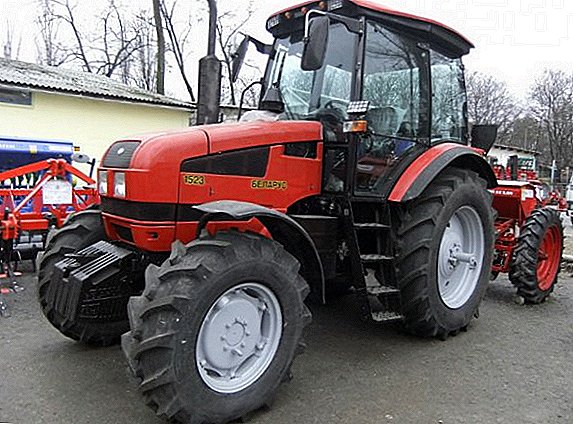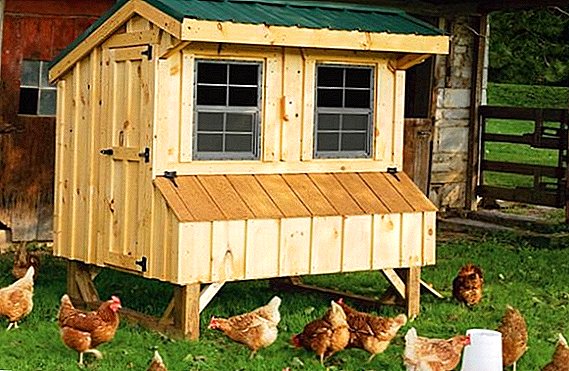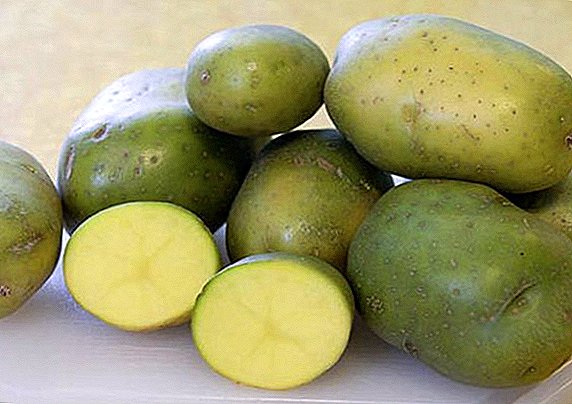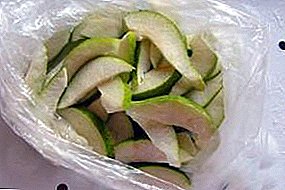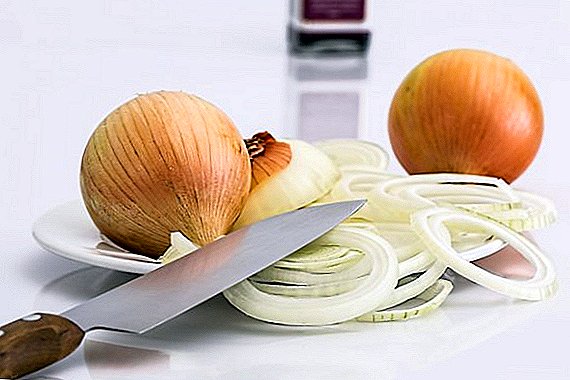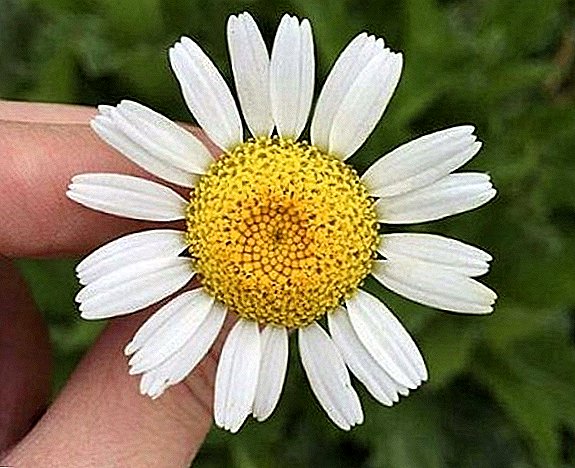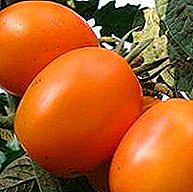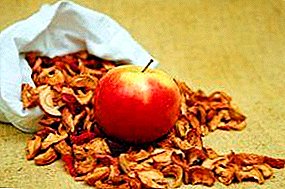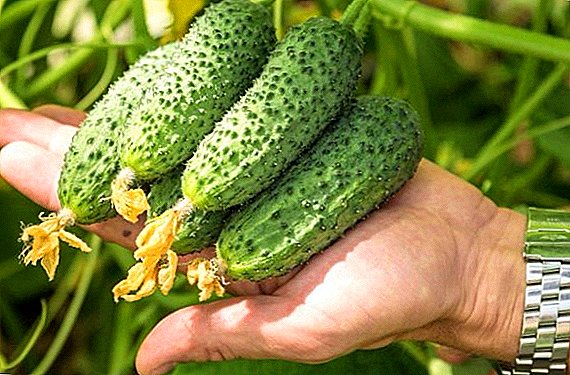 Partenocarpic hybrids of cucumbers have a definite advantage over habitual varieties that we are used to - they do not need pollination.
Partenocarpic hybrids of cucumbers have a definite advantage over habitual varieties that we are used to - they do not need pollination.
Of course, gardeners do not pass by such varieties. Among these hybrids of cucumbers represented on our market, the variety “Shosh F1” appeared, which was bred by Russian breeders.
Let us consider in more detail the characteristics of this variety and its agricultural cultivation.
Variety description
Variety of cucumbers "Shosh F1" is a hybrid of the first generation. Recommended for cultivation in the central regions of Russia, but it is quite suitable for other areas.
This is an early ripe (up to 40 days) variety that does not need to be pollinated, mainly with a female type of flowering, and is ideal for growing in any conditions (open ground, greenhouse, balcony). Such qualities make it little dependent on weather conditions and pollination by insects. Each node can ripen 1-3 cucumbers, it is quite fruitful variety.
Parthenocarpic also includes hybrids of cucumbers "Ecole", "Crispina", "Amur", "Cedric", "April", "Hector", "Emerald Earrings", "Berendey", "German".

It is resistant to the main diseases of cucumbers: mosaic, powdery mildew, target leaf foliage and yellowing vein virus.
The disadvantage of this type of cucumber is only that, since it is a hybrid, its seeds are not suitable for the next sowing, and it is useless to collect them.
Learn how to grow cucumbers in a barrel, in bags, in buckets, in hydroponics, on a windowsill, on a balcony, in plastic bottles.
Fruit characteristics and yield
From the emergence of seedlings to the ripening of the first Zelentsa takes about 40 days. Productivity with good agricultural technology is 12-18 kg per square meter. m
Zelentsy is shortish, from 6 to 12 cm long and 2-3.5 cm wide, weighing about 85 g. Strong, crunchy fruits of green color are covered with the entire surface of the skin with frequent tubercles of medium size.

They are thin-skinned, inside have a sweetish light green flesh without voids and with many small seeds. Cucumbers of this variety do not taste bitter and are excellent for any kind of harvesting (pickling, salting, salads), they are well eaten fresh in summer salads. Have a good lezhkost.
Did you know? It is recommended to use more fresh cucumbers for gout, kidney and liver diseases. This low-calorie product is useful for people suffering from diabetes and obesity. It is an excellent diuretic and decongestant. Salted and pickled cucumbers no longer have such utility and have contraindications.
Selection of seedlings
The future harvest depends on the choice of cucumber seedlings. Few people have the opportunity to buy it in specialized nurseries or greenhouses, usually go for it to the market.
It is good if you already know a proven conscientious person who grows and sells cucumber seedlings, but he may not have the sort you need. But most often the purchase is carried out from unfamiliar sellers, so the very appearance of the seedlings becomes important.

It should pay attention to such moments:
- The optimum seedling age is considered to be a 30-day-old seedling with a height of 25-30 cm, having 5-6 leaves, the length of the perimeter cluster is no more than 5 cm, its thickness should be about 6-10 mm. But seedlings of earlier periods, 15-20 days for 2-3 sheets or 10-12 days per sheet, will also take root well;
- seedlings should have a strong stalk and dark green foliage;
- should buy plants with strong roots and earthy clod. An excellent choice would be to purchase seedlings in special pots;
- no need to buy overgrown seedlings, as it will take root poorly;
- too long, drooping plants with a weak stem should be avoided;
- refuse to purchase seedlings with white bloom, dark spots and twisted leaves - such a plant is likely to hurt.

Soil and fertilizer
This crop produces good yields on light, loose, fertile soils that are well hydrated and rich in organic matter. Preferred are neutral or slightly alkaline soils with an acidity of up to 6.2. Since the roots of this culture are located on the surface (up to 30 cm in depth), attention should be paid to the fertility of the upper soil layer.
Acidic soils must be lime, making lime at the rate of 50-150 g per 1 sq. Km. m Weak acid can be improved with ash (1 kg per 1 sq. m).
Check out the algorithm for self-determination of soil acidity.The upper part of the salt marshes and heavy, not suitable soils can be replaced with purchased soil. To prepare the soil for planting cucumbers should be 3-4 weeks before their planting.
This preparation depends on the type of land:
- clay heavy soil should be loosened by making sand, manure and compost, humus;
- sandy soils improve the introduction of organic matter in the form of rotted manure and peat, compost, as well as bone or clay flour, sapropel;
- peat-swampy soils are improved by compost, horse manure, dolomite flour, rotted sawdust;
- podzolic soils require the application of manure (horse, rabbit, goat) and peat, humus and compost.

Did you know? Soil acidity can be determined by the vegetation on it. So, horsetail, blueberry, mosses grow on the soil with high acidity. Mint, bearberry, wild rosemary, lingonberry like medium acid soil. Sedge hairy and kupena prefer subacid soils. Clover, chamomile, nettle, yarrow feel great on neutral soil. Wormwood, vetch, hairy sedge and alfalfa prefer weak alkaline earth.Cucumbers intensively choose from the soil nutrients rich in potassium and nitrogen. The best predecessors for cucumbers are legumes, onions and garlic, greens, early cabbage.
But after the cabbage of medium and late varieties, melons and gourds, carrots and turnips, tomatoes, peppers and eggplants, it is better not to plant cucumbers. Cucumbers can be planted in the same place only after two or three years to prevent diseases.
Growing conditions
Cucumber is a plant of warm edges, and the best temperature regime for the germination of its seeds is in the interval + 25 ... +30 ° C, although shoots may appear at +15 ° C. At lower temperatures, it is useless to wait.
 Variety of cucumbers "Shosh F1" in a barrel
Variety of cucumbers "Shosh F1" in a barrel
The optimum temperature for normal development and fruiting is in the range of + 24 ... +28 ° C, but at temperatures of + 3 ... + 4 ° C and below, this culture dies. At night temperatures below +15 ... +18 ° C, the yield of cucumbers decreases. This culture also does not tolerate sharp fluctuations in air temperature.
Cucumbers like a humid climate. Since they have a slightly weak surface root system with a rather large green mass, actively evaporating moisture, they feel best when the soil moisture is 80-85% and at a relative air humidity of about 90%. When the soil moisture is less than 60% begin to wilt, and the humidity of more than 95% contributes to the development of diseases, the plant rots.
But in terms of lighting conditions, this culture is no longer so demanding, it can grow in partial shade. She prefers a relatively short light day at 10–12 hours. When the day rises to 16 hours, the crop yield drops. Insufficient lighting makes the plant weak, elongated and also has a negative effect on fruiting.
 Variety of cucumbers "Shosh F1" in the greenhouse
Variety of cucumbers "Shosh F1" in the greenhouse
Growing from seed to seedlings at home
Cucumber seedling is quite possible to grow at home. In this case, you will be confident in the variety of seedlings and will know exactly its quality.
Seed preparation
Sow seeds for seedlings should be 20-30 days before the expected disembarkation. Usually such a seed is sown from mid-April to early May. Packed seeds of cucumber varieties "Shosh" from well-known manufacturers, most likely, have already been processed.
But if you bought seeds by weight, they should be held for 20 minutes in a 1% solution of potassium permanganate, and then rinsed well.
Learn how to soak cucumber seeds, how to quickly germinate cucumbers.To increase the cold resistance of future seedlings, it is recommended to harden the seeds. To do this, they are wrapped in a damp cloth and placed in a refrigerator for two days at a temperature of -2 ... 0 ° C.
You need to make sure that the seeds are not crooked. If you wish, you can soak them for pecking, but this is not necessary, since the seedlings of cucumbers appear relatively quickly.

Content and location
It is best to grow cucumber seedlings on window sills or heated loggias that face south. It is a thermophilic plant. In the room where the seedlings will grow, the temperature should be at least +20 ° C, and for seed germination they will need to provide a warmer temperature (about +25 ° C).
Due to the fact that cucumbers, like all pumpkin, do not tolerate transplantation, each cucumber should be grown in a separate container. As such containers, you can use plastic cups, peat pots and tablets, cassettes, trays, cut plastic bottles and so on. The main thing is that their width and depth should be at least 7-10 cm and there should be a drainage hole.
Soil mixture can be bought, but you can prepare it yourself, for example, by mixing in proportions 1: 1: 1: 1 turf soil, sand, peat with vermiculite or sawdust. It is recommended to decontaminate the soil by heating in a furnace, watering with boiling water or potassium permanganate.
Did you know? As a crop, cucumbers have been cultivated for about six thousand years. This popular vegetable comes from India. He is now found in the wild at the foot of the Himalayas. The fruits of wild cucumbers are small and often bitter, not suitable for human consumption.

Seed planting process
Each seed is planted in a separate container. Before planting, the soil should be watered and rammed a little, make a hole about 2 cm deep in the center of each dish for the seedlings and place one or two seeds in it. Sprinkle with earth and moisten from above with a sprayer.
Capacity should be covered on top of the film and send in a warm place before germination. Usually they are placed near the battery. Every day, you need to control the moisture content of the substrate, do not allow it to dry out and air a little for a few minutes.
Learn how to plant cucumbers for seedlings.
Seedling care
As soon as shoots appear, containers with them are transferred to an illuminated place with a temperature of at least + 18 ... +20 ° С. If more than one seed has grown in the tank, then one strongest sprout is left, and the second is cut.
If there is a lack of light, the plants should be illuminated, and if the direct rays of the hot sun fall on it, they should be protected from possible burns. For lighting, you can use fluorescent or LED lamps.
 Cucumber seedlings under the lamps
Cucumber seedlings under the lamps
Watering seedlings should be carried out as the drying of the upper part of the soil with warm water. If the air in the room is too dry, it should be moistened with a sprayer. If necessary, pour under the growing elongated plant ground.
Seedlings of cucumbers during the cultivation of the house should be fed at least twice:
- The plant is first fed at a time when the first pair of leaflets is well developed. To do this, 1 g of ammonium nitrate (urea), 3 g of superphosphate and 2 g of potassium sulfate are diluted in a liter of warm water and watered seedlings. The first feeding can also be carried out by bird droppings, spreading it in water at a ratio of 1:20;
- the second time do dressing shortly before disembarkation. In a liter of water dilute 2-3 g of potassium sulfate, 4 g of superphosphate.
Important! When growing seedlings and hardening, cold drafts, sudden temperature changes and lowering the temperature below + 5 ... + 7 ° С should be avoided. Such situations can greatly weaken or even cause the death of cucumber seedlings, reducing all your efforts to grow them to zero.

Transplanting seedlings to ground
The seedlings of cucumbers of the “Shosh” variety are planted in open ground, when the threat of frost has passed and the temperature of the soil has warmed above +12 ° С. This usually happens in late May or early June. A little earlier (May 10-15), cucumbers can be planted with the use of temporary film shelters. In the greenhouse conditions, seedlings are planted on April 15-20.
Disembarkation is made on previously prepared beds. On 1 square. m used area planted 3-4 bush tall cucumbers. At first, holes are dug up, a little organic fertilizer is put in them (rotted manure, humus, ash), and they are watered.
Learn how to grow cucumbers in greenhouses.Then you should carefully remove the seedlings with an earthy clod and plant in the hole. When planting can not be too deeply submortal knee. Then, carefully water only the planted plants with warm water and sprinkle them on top with dry earth or mumble.

Agrotechnics growing seeds in open ground
Early varieties of cucumbers are well grown in the open field with seeds. Such plants are less prone to disease.
Outdoor conditions
For planting cucumbers you need to choose a quiet place that will not be blown by the winds. To protect against wind gusts can be planted around the perimeter of corn or sunflower. These cultures are sown at the end of April in two or three rows with an interval of 25 cm. They quickly grow and create a natural fence.
The soil for planting cucumbers should be prepared in advance, you can even in the fall. In the southern regions it is better to plant cucumbers in partial shade, and for more northern regions with a cold summer it is better to choose a sunny plot.
For cultivation in the garden cucumbers used the following methods:
- in barrels made of wood, metal, plastic or made from car tires with perforated bottom;
- in packages (it is possible garbage) or bags which represent vertical beds. Watering is carried out in this case with the help of plastic pipes, which are buried in the ground;
- in a special hut or tent, which additionally perform a protective function from the weather;
- on the rods of willow or bird cherry, which are installed in the ground, and then intersect each other due to its flexibility.
 Variety of cucumbers "Shosh F1" in the greenhouse
Variety of cucumbers "Shosh F1" in the greenhouse
This early ripe variety of cucumbers can be planted at the end of March in the greenhouse for obtaining an earlier harvest. For this purpose, the greenhouse is prepared in the autumn. The top layer of soil is removed (about 5 cm), since microorganisms pathogenic for cucumbers remained on it. Conduct disinfection work with copper sulfate. They make organic and mineral fertilizers, lime, and then dig up the soil.
The process of planting seeds in the ground
In open ground, seeds are planted with cucumbers in early May, when the ground is warm enough. Seeds are first germinated and disinfected. They are sown when the top layer of soil warms up above +15 ° C.
It is important to know when and how to sow cucumbers in open ground.Garden beds are prepared in advance. For this purpose, they lay a row with a depth of no more than 70 cm. Then organic fertilizer is applied - manure, prepared compost, special peat, observing proportions of about 4-5 kg per 1 square meter. meter.
After added to the soil complex fertilizer in granules according to the recommended standards. Then align the bed with a rake. After in the middle along the beds make a furrow to a depth of about three centimeters.
Then pour the following solution: in a bucket of 10 liters with water +50 ° C dissolve two capsules of the Energen stimulator. After this watering, place the seeds in such a furrow at a distance of 40-50 cm. Sprinkle with a moist, loose ground.

Watering after planting is not necessary, and you can sprinkle ground black pepper on top. This is done to scare away ants, slugs and mice from seeds. Then it is desirable to place a covering material on top of the bed, preferably in two layers.
It should be noted that soil cucumbers have better taste than greenhouses.
Watering
After planting seeds, care must be taken that the ground is not dry. For humidification, it is better to use water with a temperature of more than +20 ° C. It is especially important to monitor watering when the ovary appears, so that it does not crumble from drying out. To do this, watering should be carried out at the root, so as not to knock it down.
When the temperature reaches more than +25 ° C, the cucumbers are irrigated, which is desirable to do every day. If the temperature is below this mark, the need for sprinkling is eliminated. In extreme heat, it is also undesirable to carry out such a procedure, it can cause burns and yellowing of the leaves.
Learn more about watering cucumbers in greenhouses and open fields.The best time to water cucumbers is early morning or evening.
Cucumbers, preferably watered with a spray can. You should not water from a bucket or hose, as this may expose the roots, because of which the yield and quality of fruits may decrease.
If, after all, this has happened, then the bush should immediately be spud and pour fertile soil into the wells. During the period of fruit ripening, abundant watering is carried out in the morning and in the evening. This will help get the harvest faster.

Soil loosening and weeding
Before the start of fruiting cucumbers, it is important to regularly loosen the soil and weed. The last loosening is done when 4-5 true leaves appear. At the same time, loosening is best combined with a slight hilling. It will not be superfluous to add humus to the roots during this procedure.
Masking
At cucumbers they are stabbed - removing unnecessary shoots (stepchildren), which pull forces upon themselves, as a result of which the yield of the plant decreases.
Experts recommend to carefully remove the excess ovary in the axils of the first 3-4 leaves, as well as lateral shoots in the axils of the first 5-6 leaves. Here the main thing is to distinguish the main stem with the ovary from the stepchildren.
Removal of stepsons is carried out as follows: with one hand carefully hold one leaf, and the other carefully remove the stepson near the stem.
Important! The process of pasying is done when the stepchildren have reached 4-6 cm. If they have grown in length more than 20 cm, then part of the crop has already been lost, because the stepchildren pulled the necessary elements to form and grow the fruit.

Garter
Garter of cucumbers in the open ground is carried out for the following reasons:
- a properly tied shrub forms longer scours, and there is more ovary on it, which contributes to the formation of more fruits;
- this process protects against fungal and infectious diseases;
- less land on the plot;
- no need to stoop when harvesting.
Pay attention to the rules of garter cucumbers in the greenhouse.Garter cucumbers can be done by different methods, consider the main ones:
- horizontal. The most common and convenient method. For this purpose, two pillars of wood and metal are driven into the ground at two edges from a row of cucumber plantations. Between them they pull a wire or a rope. The distance between the lines of tension - 25-30 cm. To such a support and tie up with the growth of the lash of cucumbers;
- vertical garter. Two supports are installed, and a rope is stretched between them, to which cloth strips about 2.5–3 cm wide are attached (cut nylon tights can be used). The lower part of such strips tied around the base of the stem. As it grows, this culture wraps around the support and stretches upwards. The number of supports should be equal to the number of bushes for garters. You can place the sticks in the form of a pyramid near each bush, and between them stretch a rope on which to fasten strips of cloth;
- nets for tying. In agro shops sell nets for climbing crops. Such a grid is stretched between the supports, and cucumbers are perfectly woven into its cells.
How to tie cucumbers: video
Top dressing
To obtain a good crop of cucumbers, it is recommended to feed each week with organic or mineral fertilizers. The first root dressing is made 21 days after the emergence of shoots, and then repeated every 7-8 days.
Find out why cucumber leaves turn white, turn yellow and dry, wither, whether to pick them off, why the midges appear on them.The following mixtures are recommended for dressings:
- for a ten-liter bucket they take 2 capsules of the “Energen 2” preparation (growth stimulator), stir and consume about 3 liters per 1 sq. m. m;
- 10 liters of water take 1 tablespoon of fertilizer "Effecton". Consumption rate - about 4 liters per 1 square. m;
- for 10 liters of liquid take 1 tablespoon of nitrophoska and 2 tablespoons of liquid organic fertilizer "Agricola Vegeta". Consumption rate - about 4.5-5 liters per 1 square. m;
- for a ten-liter bucket dissolve 2.5-3 tablespoons of the liquid organic fertilizer "Agricola Aqua", which is good for the appearance of yellow leaves. Consumption rate - about 3-4 liters per 1 square. m

Pests, diseases and prevention
When growing cucumbers, you can encounter many pests that can destroy or greatly reduce the yield of cucumbers. Consider the most common of them:
- spider mite. When it appears, the leaves are covered with small whitish specks, and a thin cobweb appears. The size of the tick is about 0.5 mm, and it is difficult to examine it with the naked eye. The biopreparation "Aktofit", "Fitoverm" and others will perfectly cope with such a pest;
- melon aphid. The parasite, like the tick, on the lower part of this culture, infects the leaves, ovaries and flowers. The plant begins to dry, the leaves curl. Often overwinter on the remains of plants. Against aphids, there are many chemical and biological products, for example - the biological product "Verticillin";
- whitefly. It is a small white midge that is a pest for this crop. To get rid of it, you need to regularly remove weeds, spray and wash the leaves with water, and you can also use the drug "Bowerin."

In addition, cucumbers can be subject to the following diseases:
- gray rot - this is a fungal disease. Manifested in the form of dark spots on the stem and grayish plaque on the fruit. Affected areas recommend to powder and rub slightly with ash, stop watering. Excessive moisture can cause and exacerbate the disease. Euparine or Bayleton drugs will help to fight this nuisance;
- powdery mildew. Manifested in the form of whitish or reddish specks on the leaves and stem of the plant. Sites that are affected by this disease are recommended to be rubbed with ash from wood or removed. You can spray cucumbers with a solution of mullein, as well as colloidal sulfur;
- white rot. Mycelium completely covers cucumbers with whitish mucus, and they begin to rot. In this case, you need to remove the infected parts or sprinkle with lime-fluff. Excessive moisture can contribute to the appearance of the disease;
- root rot. At the initial stage of fruiting, dark spots appear near the roots. The stem begins to rot, and the roots gradually die off. Severe temperature surges and heavy rains can exacerbate the disease. It is necessary to dry the affected places and sprinkle with ash or lime. Watering only a small soil around the bush. For the prevention of root rot, it is desirable to disinfect the soil;
- mosaic. Manifested in the form of light or dark green spots on the foliage, deforming it. May affect and fruit. Falls through seeds or plant residues. Sick plants are best removed;
- olive spot. It is expressed as brown seals that release fluid. It happens because of watering with cold water, drafts and heavy rain. With this trouble, you need to stop watering cucumbers for five days and treat with Oksih or apply Bordeaux liquid.

Find out what are the signs and what to do with perinospora, fusarium on cucumbers.To protect cucumbers from pests and diseases, it is recommended to adhere to the following recommendations:
- disinfect seeds before planting into the ground;
- adhere to the rules of crop rotation with other crops so that fungal diseases and pests that can affect cucumbers are left on the soil and plant residues;
- update the top layer of soil;
- try to maintain an optimal level of moisture;
- avoid sudden changes in temperature;
- watering exercise tepid water;
- constantly weed weeds;
- exercise regularly top dressing to strengthen the plant.
Familiarize yourself with the popular methods of protecting cucumbers from pests and diseases.
Harvesting and storage
Harvesting cucumbers begins from July until the first half of August. Fruits are harvested as they ripen. It is not necessary to allow overripe cucumbers, they lose their presentation and taste. When harvesting, it is necessary to remove diseased and deformed fruits, so as not to infect and prevent other greens from growing. It is better to collect cucumbers in the morning or in the evening, then they are more juicy. This should be done carefully so as not to break the whip.
 Collection of cucumbers "Shosh"
Collection of cucumbers "Shosh"
After harvesting, cucumbers need to sort out. Reject overgrown, diseased and deformed fruits, and healthy-looking leave.
On the shelf of the refrigerator for storing vegetables in an open polyethylene package they can be up to 10 days. Above you can put a wet gauze, it will save them from drying out.
In the cellar or basement, you can use the trays or boxes, the bottom of which is lined with a film thickness of 40 microns. It helps retain moisture and prevents the vegetable from drying out. Do not store cucumbers in a sealed package. This method will retain moisture, but cucumbers will "suffocate" and lose their taste properties.
In order for cucumbers to retain their taste longer, it is necessary to maintain the temperature regime + 5 ... +8 ° C, and moisture - at the level of 90%. This will help save cucumbers for up to three weeks. For longer storage cucumbers can be preserved (pickled, fermented or pickled).

Possible problems and recommendations
Although Shosh cucumbers are resistant to the environment, the following problems may occur:
- Deformation of fruits. Cucumbers take an ugly form due to the lack of beneficial elements, especially potassium. To eliminate this problem you need to feed them with ashes. If the thickenings go near the stem and taper off to the other side, then, most likely, this is a nitrogen deficiency, and additional fertilizing from nitrogen-containing fertilizers is needed. You can fertilize organic fertilizer - mullein, chicken manure. Sudden temperature changes can cause a narrowing in the middle of the fetus. To do this, it is necessary to cover this culture with a special covering material from the cold snap. If they acquire an arcuate shape, this means irregular and uniform watering. For example, strong watering after drought. Watering should be carried out regularly and correctly.
- Yellow leaves. If the leaves turn yellow and dry up prematurely, this is a sign of a lack of nitrogen. It is necessary to make the feeding of nitrogen fertilizers (nitrophoska).
- The absence of the ovary. The ovary may be absent for such reasons: heat, excess nitrogen, seeds of last year.
- Cucumbers wither. The cause may be damage to the roots. This is due to excessive moisture or sabotage of rodents, as well as due to the defeat of root rot.
Find out why cucumbers are bitter.

Partenokarpichesky hybrid variety of cucumbers "Shosh F1" is perfect for growing in open ground or greenhouse, in containers or bags. With good agricultural practices, it produces high yields, the receipt of which does not depend on weather conditions. Its fruits are distinguished by high taste, small size, not bitter and excellent for preservation. Seedlings can be grown at home, and you can immediately plant in the ground. The usual agronomy for cucumbers and resistance to many diseases make the cultivation of these cucumbers a profitable occupation.
Video: Cultivation of "Shosh F1" in a barrel


